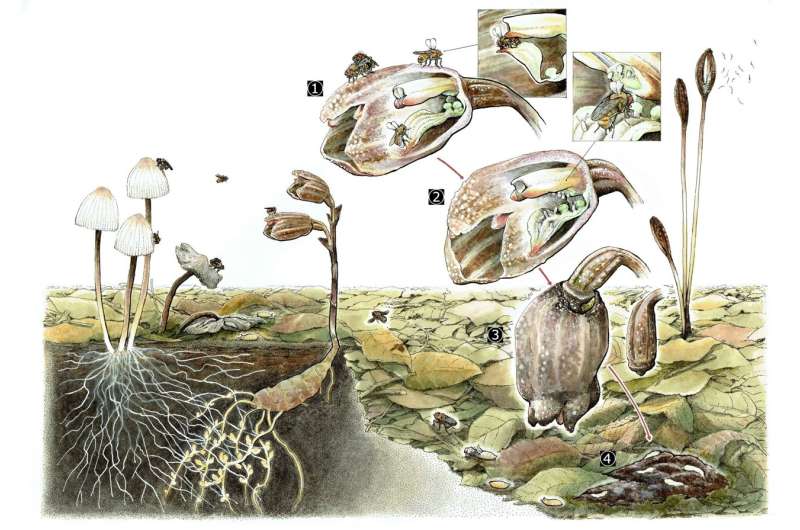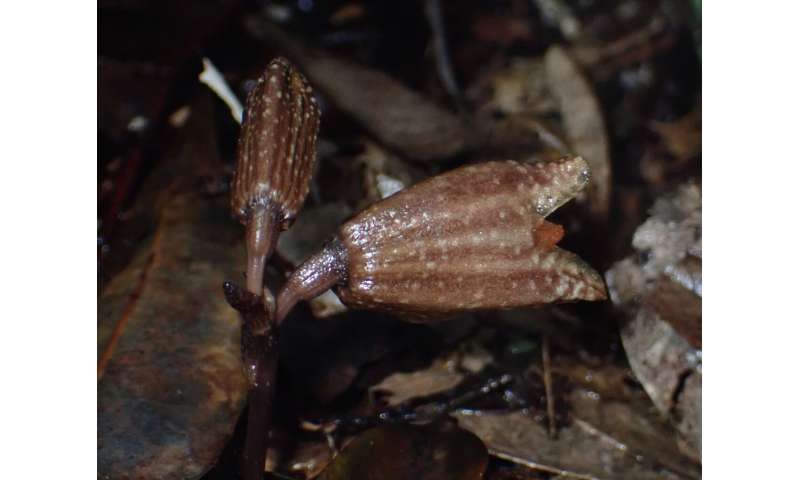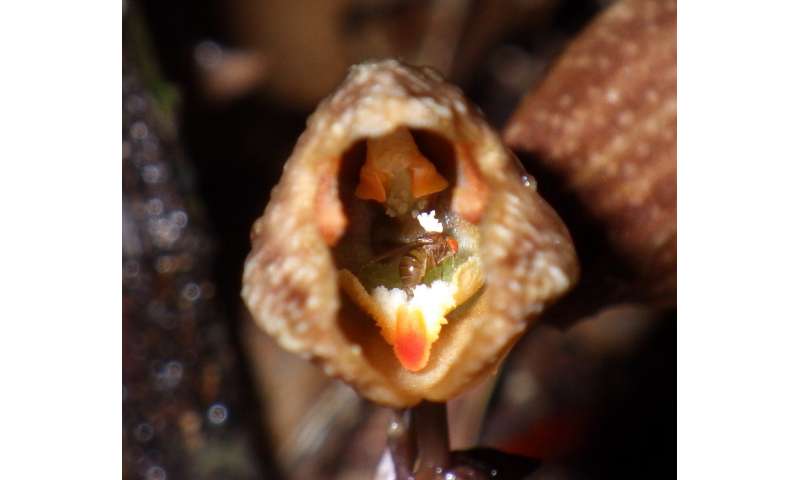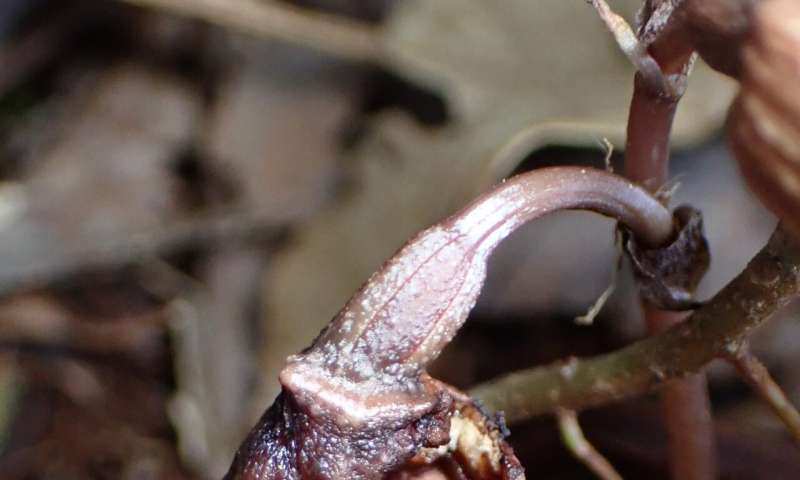This article has been reviewed according to Science X's editorial process and policies. Editors have highlighted the following attributes while ensuring the content's credibility:
fact-checked
peer-reviewed publication
trusted source
proofread
Fungi-eating plants and flies team up for reproduction

Fungi-eating orchids were found for the first time to offer their flowers to fungi-eating fruit flies in exchange for pollination, which is the first evidence for nursery pollination in orchids. This unique new plant-animal relationship hints at an evolutionary transition towards mutualistic symbiosis.
Orchids are well known to trick their pollinators into visiting the flowers by imitating food sources, breeding grounds or even mates without actually offering anything in return. The fungi-eating, non-photosynthetic orchid genus Gastrodia is no different: To attract fruit flies (Drosophila spp.), the plants usually emits a smell like their common diet of fermented fruits or decaying mushrooms.
The fruit flies get lured into the flowers, are trapped there for a short while and get pollen attached to their backs which they then transport to other plants of the same species. Thus, this deceptive relationship offers benefits to only one partner.
Kobe University plant biologist Suetsugu Kenji, a specialist on these orchids, noticed that a certain species of this genus, Gastrodia foetida, has particularly fleshy petals that decompose and fall off a few days after pollination. He decided to investigate these plants in the search for the first example of orchids engaging in "nursery pollination," which is a plant offering a breeding ground to its pollinator.
And indeed, in the study now published in the journal Ecology, he reports that fruit flies often lay their eggs into the plant's flowers and that their larvae can fully develop into adult flies in this environment.
-

Flower of Gastrodia foetida. Credit: SUETSUGU Kenji -

A fruit fly lays its eggs inside a flower of Gastrodia foetida. Credit: SUETSUGU Kenji
Suetsugu says, "The most intriguing aspect is that, contrary to its common name as the 'fruit' fly, Drosophila bizonata, a species specialized in mushroom-feeding, predominantly utilizes decaying Gastrodia foetida flowers as brood sites. A possible explanation is the fact that Gastrodia foetida is a non-photosynthetic orchid that feeds on fungi. These non-photosynthetic orchids often exhibit chemical resemblance to the fungi they assimilate, underlining the age-old adage 'You are what you eat.'"
"As a plant that feeds on mushrooms, G. foetida likely tastes similar to a mushroom, making it a prime target for the mushroom-specialized fruit fly." This discovery is significant because it uncovers a new type of nursery pollination system, going beyond deceptive strategies commonly found in the genus.
The Kobe University researcher further explains that the relationship is neither obligatory nor specific, that is, the fruit flies also lay fully developing eggs on fungi. Thus, this finding may represent an example for the transition from a deceptive relationship towards mutualistic symbiosis, suggested by two factors: the low cost to the plant, since the petals are not needed anymore after pollination; and that closely related Gastrodia dominantly utilize a deceptive strategy without providing a nursery.
-

A flower of Gastrodia foetida on the verge of decomposition. Credit: SUETSUGU Kenji -

A fruit fly larva consuming decomposing floral tissue on the ground. Credit: SUETSUGU Kenji
Suetsugu concludes, "This study represents the first evidence of nursery pollination in orchids, comprising nearly 30,000 species, and being the most diverse plant group in the world. In addition, it contributes vital understanding to the intricate and mutually beneficial relationships that can develop in nature. The understanding of how plants can offer genuine benefits rather than merely deceiving pollinators could impact the broader study of plant-animal interactions and their evolutionary dynamics."
More information: Kenji Suetsugu, A novel nursery pollination system between a mycoheterotrophic orchid and mushroom‐feeding flies, Ecology (2023). DOI: 10.1002/ecy.4152
Journal information: Ecology
Provided by Kobe University


















